Slugs & Snails
the slimy gits
This page may contain affiliate links. For a better user experience, you'll never see any adverts on this website but the small commision from affiliate links keeps it going.
My poor hostas and vegetable seedlings are being eaten by slugs and/or snails.
If you see silvery trails around your plants, holes in the leaves or whole seedlings chomped off… it’s likely to be slugs or snails.
I have a few simple ways of deterring them from your crops.
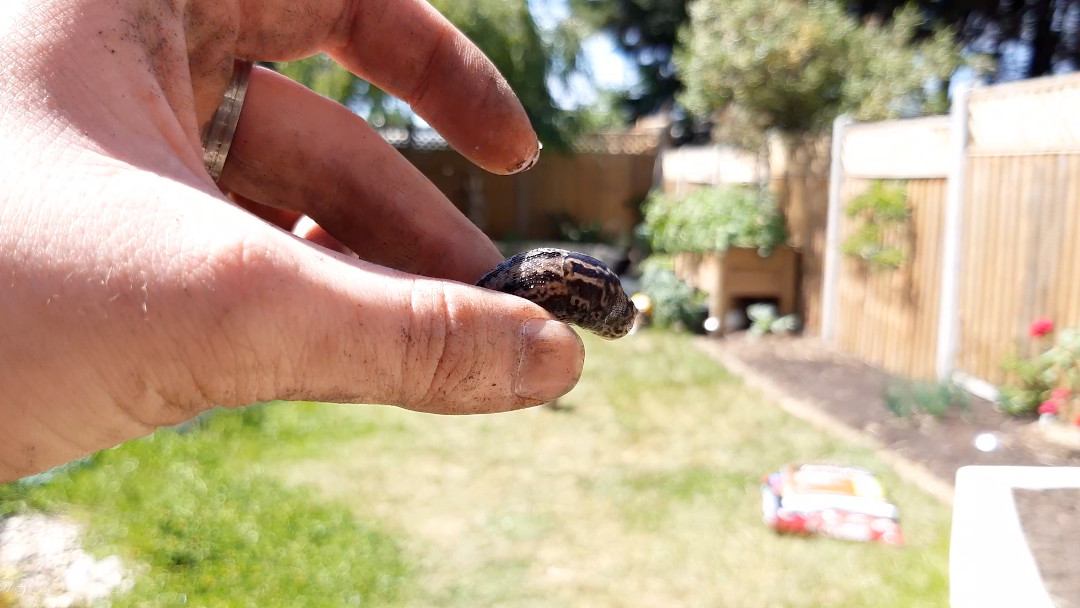
Identifying them
Identifying slugs and snails is usually pretty simple as they leave a trail behind them, wherever they go. You’re looking for a silvery path around the base of your affected plants.
Snails will hide during the day, to keep themselves safe from predators who are looking for a slow moving meal. This will be birds, hedgehogs and amphibians.
This means that they can be a little tricky to find but you can start by checking where it’s dark. This could be under bark, fallen branches, leaves, lips of pots, long grass or stones.
It’s also worth noting that some species of slugs and snails won’t eat your plants and instead aid breaking down of organic matter, which you want. If you have a little time, do some research so you can spot the difference.
Method 1: Picking and flicking
This is the most straight forward method. I don’t like killing animals so this method just gets them away from your garden or plot.
Pick them off whatever they are clinging to and throw them away. Your neighbours won’t appreciate slugs raining from the sky, or the affect this will have on their own plants, so if you’re able to, throw them where they won’t bother others.
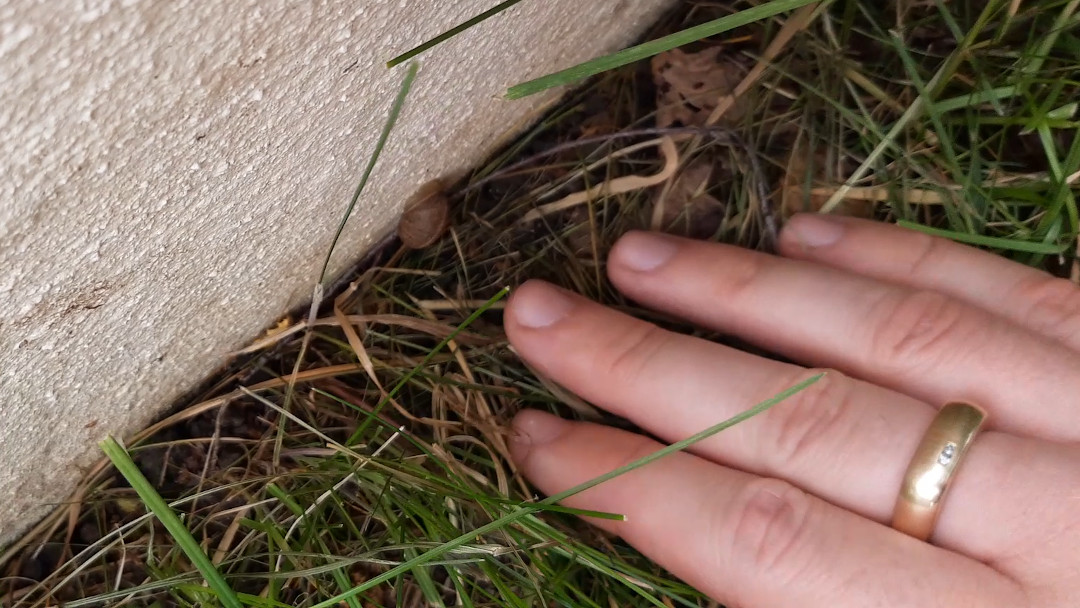
This is best done as the sun goes down when they have heard the dinner bell ringing. They’ll be out and about doing their slimy thing, so go out with a torch and you should spot them easily. They come out after a heavy rain too.
Method 2: Garlic spray
Garlic contains it’s own protection against slugs and snails: Allicin
If scouting outside in the dark becomes too time consuming, or you simply cannot find them, a spray of a garlic solution (sometimes called a garlic soak) is very effective, cheap and easy.
The garlic spray works best when you’re well prepared for the coming invasion and applying to plants proactively, before they are damaged. If you already have a slug problem, tougher methods may be needed.
You’ll need:
- A litre of water
- Two bulbs of garlic
- A spray bottle

Step 1: Boil the water
Boil the water in a pan. While this is boiling, you can do step 2.

Step 2: Crush the garlic
Break the two garlic bulbs into its cloves. With either a rolling pin, flat edge of a knife or a garlic crusher, crush the cloves into a bowl.
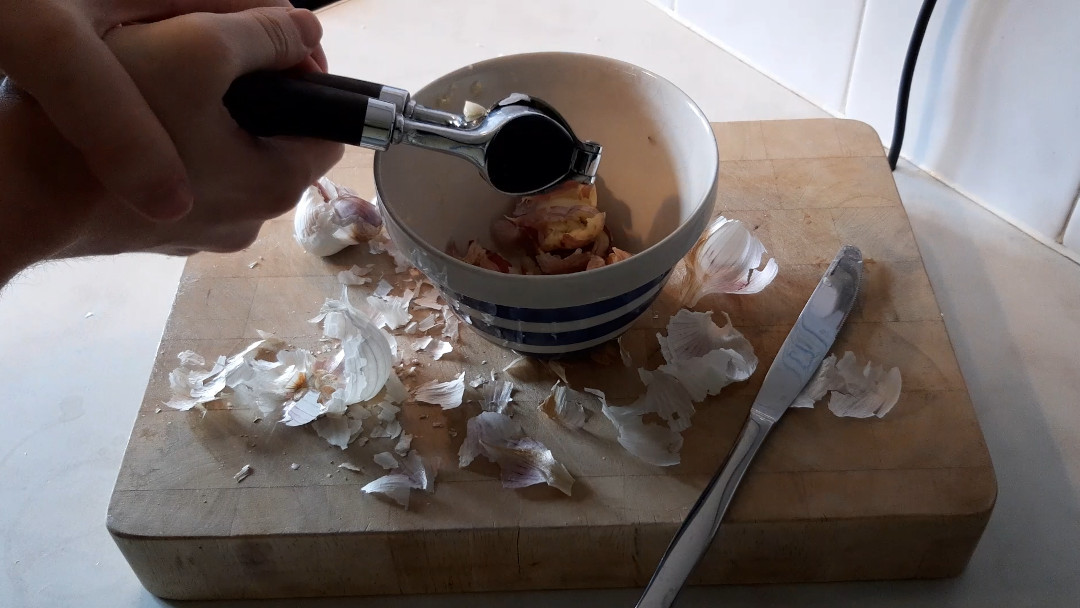
Step 3: Add to boiling water
Once the water has boiled, turn the heat down and add the crushed garlic. Give it 10 minutes on a simmer.
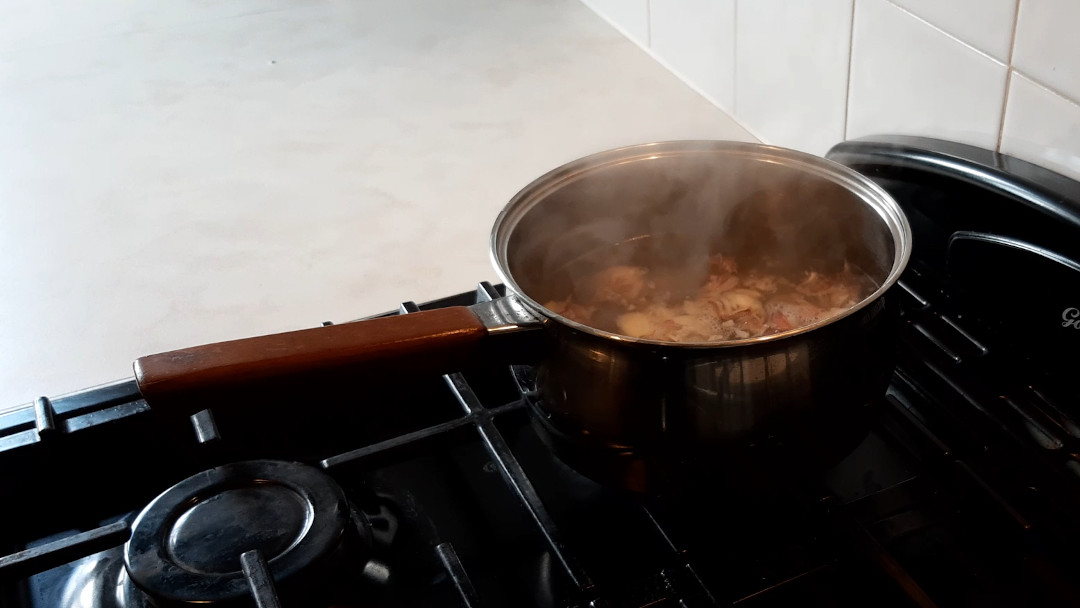
Step 4: Let it cool
This will make your house smell like garlic for days, so put it outside to cool. Once cool, sieve out the garlic and transfer into a container with a lid (e.g. empty water bottle).
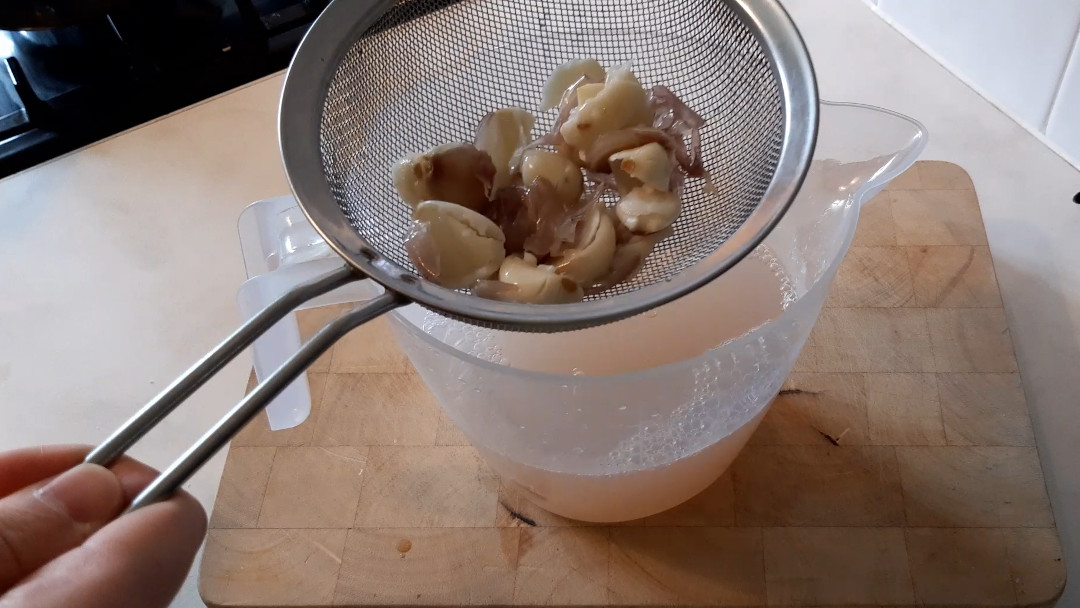
Step 5: Spray affected plants
Add a drizzle (a couple of tablespoons) to a spray bottle and fill with water. Give it a shake and then spray onto the affected plants.

Do this on a day when it’s unlikely to rain so the plant has the most time to soak in the solution.
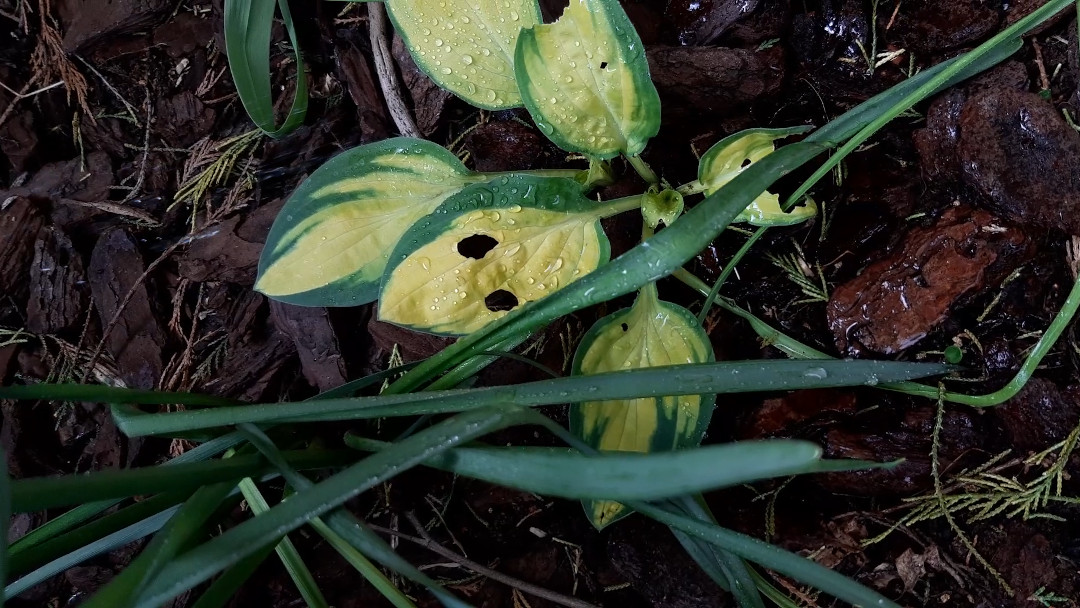
Repeat every two weeks.
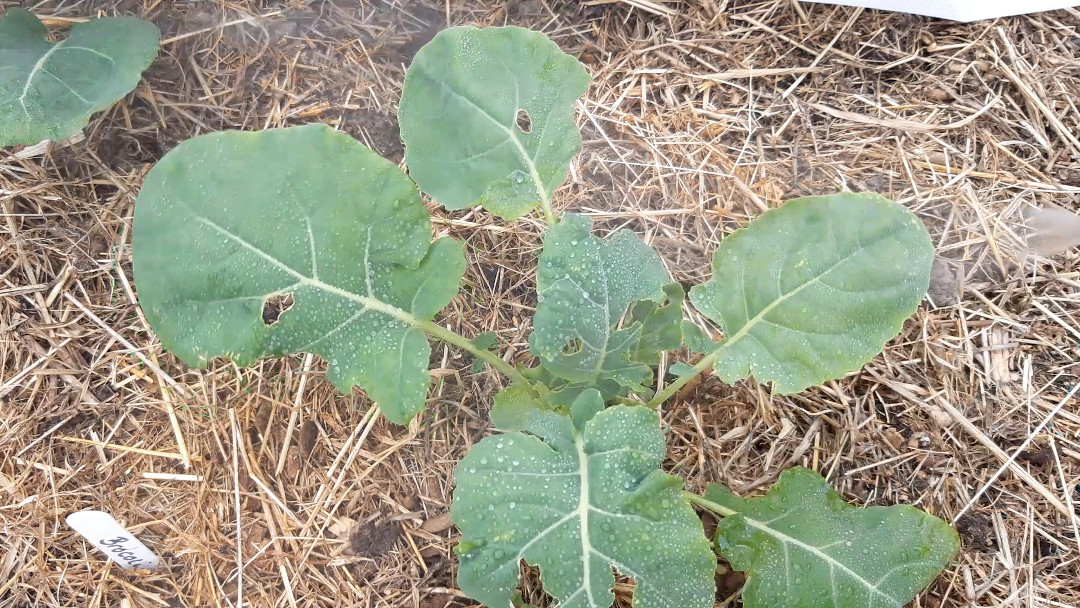
Method 3: Slug pub
A slug pub is a very effective way of removing slugs, quickly. These can be made by sinking glass jars into the soil near the affected plants, or by purchasing specially designed slug traps.
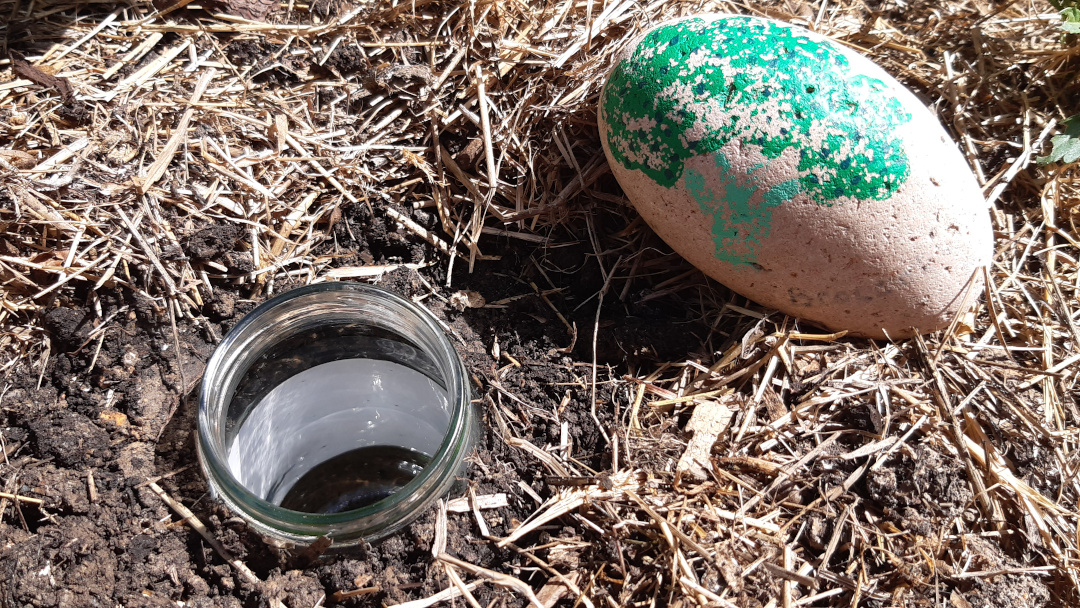
The product I have used, and tested, can be found here
With both methods, you install the trap where you need it and pour in some beer or lager. You need enough so that when the slugs and snails go in, they would be submerged.
It’s best to do this in the evening to stop the contents from drying out or evaporating, and slugs are more active during the evenings when it has rained or when you have watered the area.
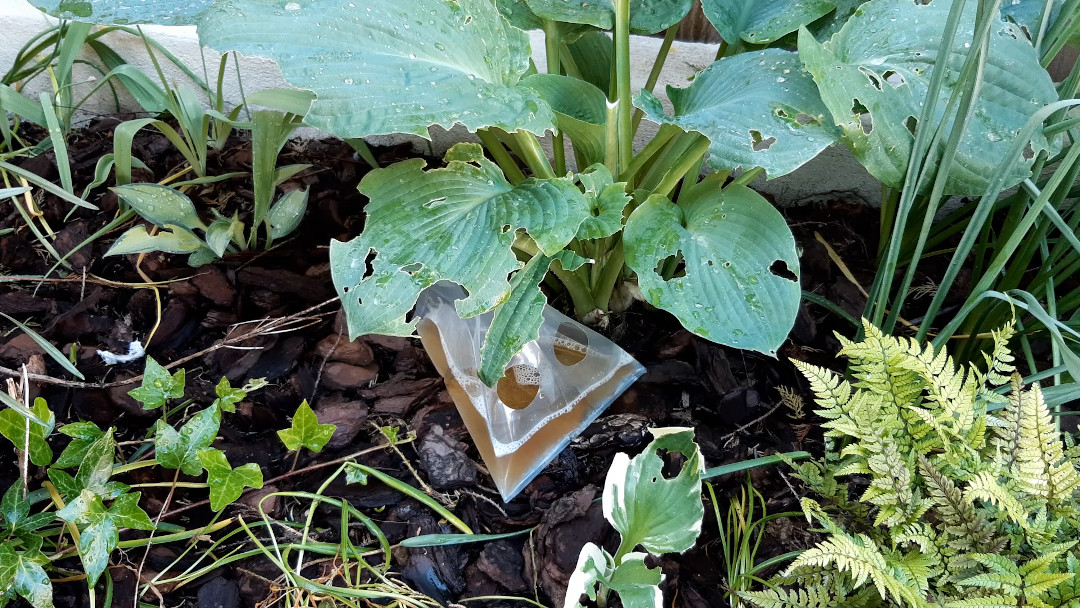
Check the traps each day.
I have tried leaving the trap out for a few days in a row and it seems to work fine and it doesn’t need to be refilled each day. I’ve also tried watering down the beer/lager and that also seems to have good results with a 1:1 mixed with water. This should save some money.
Share your learnings
I hope this has helped you tackle these annoying pests.
I’d love to hear from you though. What pests affect you the most? Do you have any other ways of controlling slugs and snails? Is there a certain brand of drink that works best in beer traps?
If you liked this article, consider joining us on social media where the community shares their stories and tips:
Article written on May 14, 2020
Updated May 22, 2020